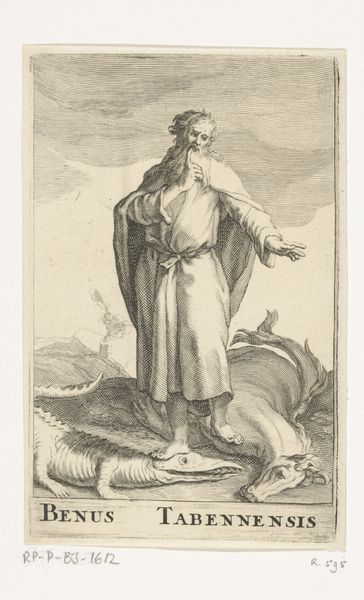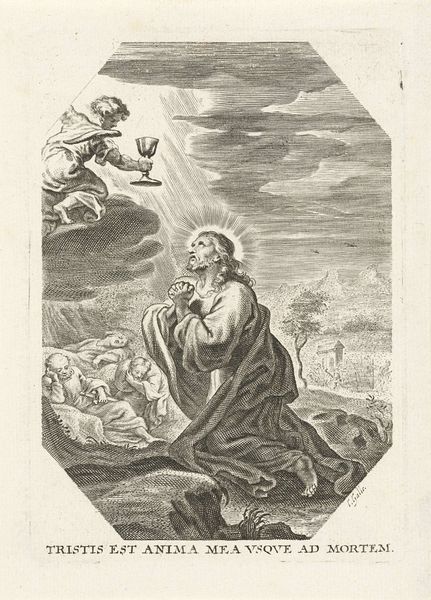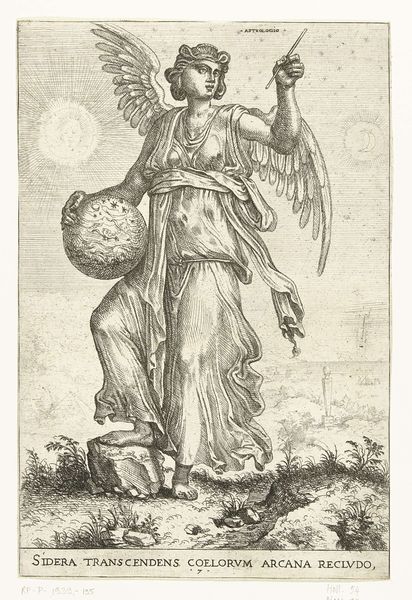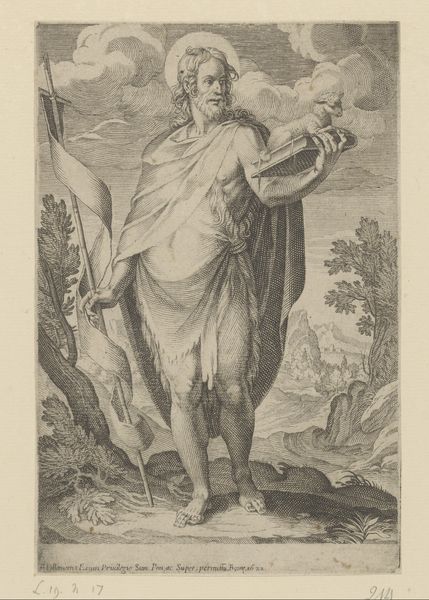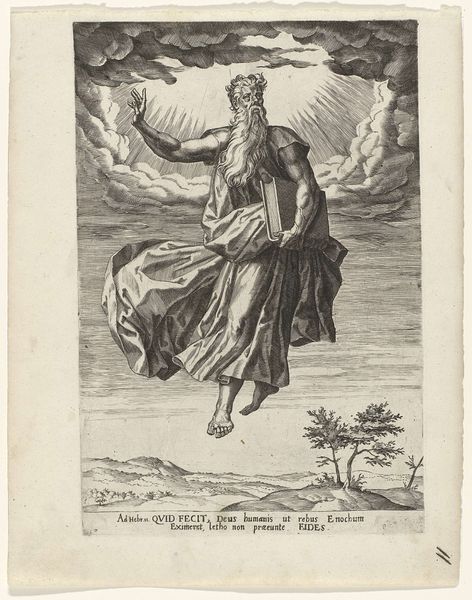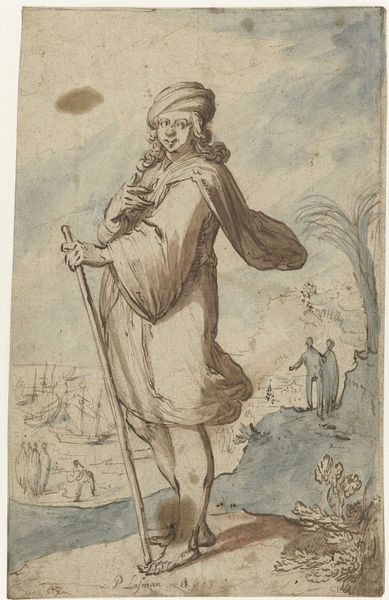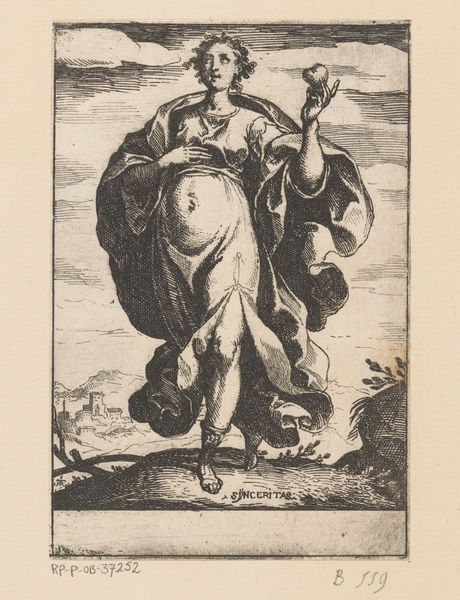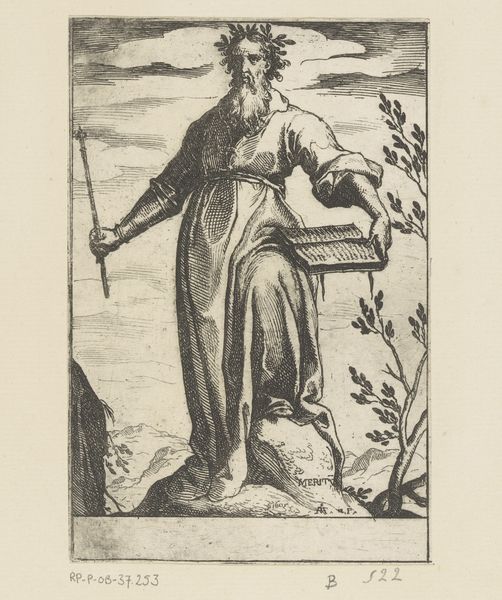
print, engraving
#
baroque
# print
#
old engraving style
#
landscape
#
figuration
#
history-painting
#
engraving
Dimensions: height 199 mm, width 147 mm
Copyright: Rijks Museum: Open Domain
Claude Mellan’s etching presents John the Baptist with the Lamb of God, a symbol of Christ's sacrificial role, charged with layers of meaning. The lamb, often depicted alongside John, hearkens back to ancient sacrificial rites, resonating with profound religious undertones. This pairing echoes through art history, from early Christian mosaics to Renaissance paintings, each era imbuing it with renewed significance. The lamb, once a mere offering, transforms into a potent emblem of innocence and redemption. Consider the hand gesture. It is a classic symbol of invitation, yet it is open to interpretation. One cannot help but draw parallels to similar gestures found in ancient Roman art or even earlier Egyptian depictions, where outstretched hands signify offering, supplication, or divine blessing. In the collective psyche, these symbols evoke primal emotions—fear, hope, and the yearning for salvation—engaging viewers on a subconscious level. Observe how these symbols resurface and evolve, forming an endless cycle of cultural memory.
Comments
No comments
Be the first to comment and join the conversation on the ultimate creative platform.




